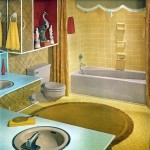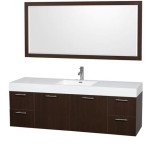DIY Bathroom Sink Drain Repair Kit: Your Home Depot Solution
A malfunctioning bathroom sink drain is a common household nuisance. From slow draining to complete blockage or leaks, these issues disrupt daily routines and can potentially lead to more significant plumbing problems if left unattended. Fortunately, many drain issues can be resolved effectively using a DIY Bathroom Sink Drain Repair Kit, often readily available at retailers such as Home Depot. This article provides a comprehensive guide to understanding, selecting, and utilizing these kits for effective drain repair.
Navigating the world of plumbing repairs can seem daunting, but with the right information and tools, addressing a faulty sink drain becomes a manageable task. The objective is to empower homeowners to confidently approach these repairs, saving time and expense compared to hiring a professional plumber for minor issues. A well-chosen and appropriately utilized DIY kit provides the necessary components for many common drain problems.
The availability of these kits at Home Depot streamlines the process. The retailer offers a diverse selection, catering to various sink drain types, materials, and repair needs. From simple gasket replacements to more comprehensive trap repairs and complete drain assembly replacements, the options are numerous. Understanding the specific nature of the drain problem is crucial in selecting the correct kit to ensure a successful repair.
Identifying the Sink Drain Problem
Before venturing to Home Depot to purchase a DIY repair kit, it is essential to accurately diagnose the problem afflicting the sink drain. This involves a careful inspection of the drain assembly, focusing on the typical areas prone to failure. Common issues include leaks, clogs, and damaged components.
Leaks are frequently observed at pipe connections, around the drain flange where it sits flush with the sink basin, or within the P-trap. Visible water stains, dampness, or dripping are clear indicators of a leak. Tracing the source of the leak is critical to determining which components require replacement. Check the tightness of nuts and connections initially, as a simple tightening may resolve the issue.
Slow draining suggests a partial or complete clog. This is typically caused by hair, soap scum, and other debris accumulating within the drainpipe. If the sink drains very slowly or not at all, a clog is the likely culprit. A plunger or drain snake might be sufficient to address less severe clogs; however, a complete drain disassembly may be needed for more stubborn blockages.
Physical damage to drain components is another common reason for repair. The P-trap, a curved section of pipe designed to trap debris and prevent sewer gases from entering the home, is particularly vulnerable. Cracks, corrosion, or deformation of the P-trap or other drain pipes necessitate replacement. Similarly, worn-out gaskets or washers can cause leaks and require immediate attention.
Selecting the Appropriate DIY Repair Kit
Once the sink drain problem has been identified, selecting the correct DIY repair kit becomes the next crucial step. Home Depot offers a variety of kits designed for different drain types and problems. Consideration must be given to the type of sink, the material of the drainpipes, and the nature of the repair.
Several types of drain kits are commonly available. These include gasket and washer replacement kits, P-trap replacement kits, complete drain assembly kits (including the drain flange, stopper, and drainpipe), and kits designed for specific types of sink drains, such as those with pop-up stoppers or overflow mechanisms. Selecting the kit that specifically addresses the diagnosed issue is paramount for a successful repair.
The material of the drainpipes also influences the kit selection. Common materials include PVC (polyvinyl chloride), ABS (acrylonitrile butadiene styrene), and metal (typically brass or chrome-plated brass). PVC and ABS are plastic materials often found in newer homes, while metal pipes are more prevalent in older structures. Kits should be compatible with the existing drain material. When transitioning between different materials, use transition fittings.
Consider whether the kit includes all the necessary components for the repair. A comprehensive kit should include replacement parts, such as gaskets, washers, nuts, and bolts. Some kits may also include tools, such as wrenches and pipe cutters, although it is generally recommended to have these tools on hand before starting the repair. Read the kit description carefully to verify its contents and ensure it aligns with the repair needs.
Checking customer reviews and ratings on Home Depot's website can also provide valuable insights into the quality and suitability of different repair kits. Reviews often highlight the ease of installation, the durability of the components, and the overall effectiveness of the kit in resolving common drain problems.
Step-by-Step Guide to Using the Repair Kit
After acquiring the appropriate DIY Bathroom Sink Drain Repair Kit from Home Depot, the process of repairing the sink drain can begin. The following step-by-step guide outlines the typical procedures involved in a drain repair, although specific instructions may vary depending on the kit and the nature of the problem. Prior to commencing any work, ensure the water supply to the sink is turned off.
Step 1: Preparation and Safety: Before starting, clear the area under the sink and gather all necessary tools, including the repair kit, adjustable wrenches, pliers, a bucket, rags or towels, safety glasses, and gloves. Placing a bucket under the drainpipe is essential to catch any water that may be trapped within the system. Wearing safety glasses protects the eyes from debris, and gloves help maintain hygiene and grip.
Step 2: Disassembly of the Old Drain: Begin by loosening the slip nuts that connect the drainpipe sections. Start with the nut connecting the P-trap to the tailpiece (the vertical pipe extending down from the sink drain). Position the bucket underneath to catch any residual water. Proceed to disconnect the P-trap from the drainpipe that leads to the wall. If the drain flange (the part that sits inside the sink basin) needs to be removed, loosen the nut that secures it to the sink. In some cases, the flange may be secured with plumber's putty, which will require gentle prying to loosen.
Step 3: Cleaning and Inspection: After disassembling the old drain, thoroughly clean all the components and the surrounding area. Remove any old plumber's putty or debris from the sink basin and the drain opening. Inspect the removed parts for damage, corrosion, or wear. This inspection confirms the accuracy of the initial diagnosis and ensures that all necessary components are being replaced.
Step 4: Installation of New Components: Refer to the instructions included with the DIY repair kit for specific guidance on assembling and installing the new components. Generally, the installation process mirrors the disassembly process, but in reverse. Start by installing the drain flange in the sink basin, using new plumber's putty or silicone sealant to create a watertight seal. Tighten the nut that secures the flange from underneath the sink. Next, assemble the P-trap and connect it to the tailpiece and the drainpipe leading to the wall. Ensure that all slip nuts are tightened securely, but avoid overtightening, which can damage the plastic pipes.
Step 5: Testing for Leaks: After completing the installation, slowly turn the water supply back on and carefully inspect all connections for leaks. Run water into the sink for several minutes to ensure that the drain functions properly and that there are no leaks. If leaks are detected, tighten the corresponding slip nuts slightly. If the leaks persist, disassemble the connection, inspect the components for damage, and reassemble with new plumber's putty or sealant as needed.
Step 6: Final Adjustments: Once the system is confirmed to be leak-free, make any necessary final adjustments. Ensure that the drain stopper functions correctly and that the P-trap is properly aligned. Clean up the work area and dispose of the old parts and packaging materials appropriately.
While these kits offer convenience, some situations are best left to a professional. If the drain issues are complex, involve significant plumbing modifications, or are beyond the scope of a basic DIY project, it is advisable to consult with a licensed plumber. Additionally, if there is any uncertainty about the procedures or the correct components to use, seeking professional assistance can prevent further damage and ensure a safe and effective repair.

Pf Waterworks 1 5 In X 7 25 Abs Universal Pop Up Drain Repair Kit Pf0907 The Home Depot

Simple Drain 1 25 In Rubber Threaded P Trap Bathroom Single Sink Kit 3ea 1v2 Tc0 The Home Depot

Pf Waterworks 1 5 In X 7 25 Abs Universal Pop Up Drain Repair Kit Pf0907 The Home Depot

Simple Drain 1 25 In Rubber Threaded P Trap Bathroom Single Sink Kit 3ea 1v2 Tc0 The Home Depot

Snappytrap Universal Drain Kit For Bathroom Sinks Dk 105 The Home Depot

Numhew Bathroom Sink Drain Kit 1 4 In 22 63 H X 6 88 W 25 D Pipe Replacement I3i4y7i4 The Home Depot

Snappytrap Universal Drain Kit For Bathroom Sinks Dk 105 The Home Depot

Wowow Bathroom Sink Pop Up Drain With Overflow In Black 2 Pack X3003bx2 The Home Depot

Numhew Bathroom Sink Drain Kit 1 4 In 22 63 H X 6 88 W 25 D Pipe Replacement I3i4y7i4 The Home Depot

Snappytrap Universal Drain Kit For Bathroom Sinks Dk 105 The Home Depot
Related Posts







